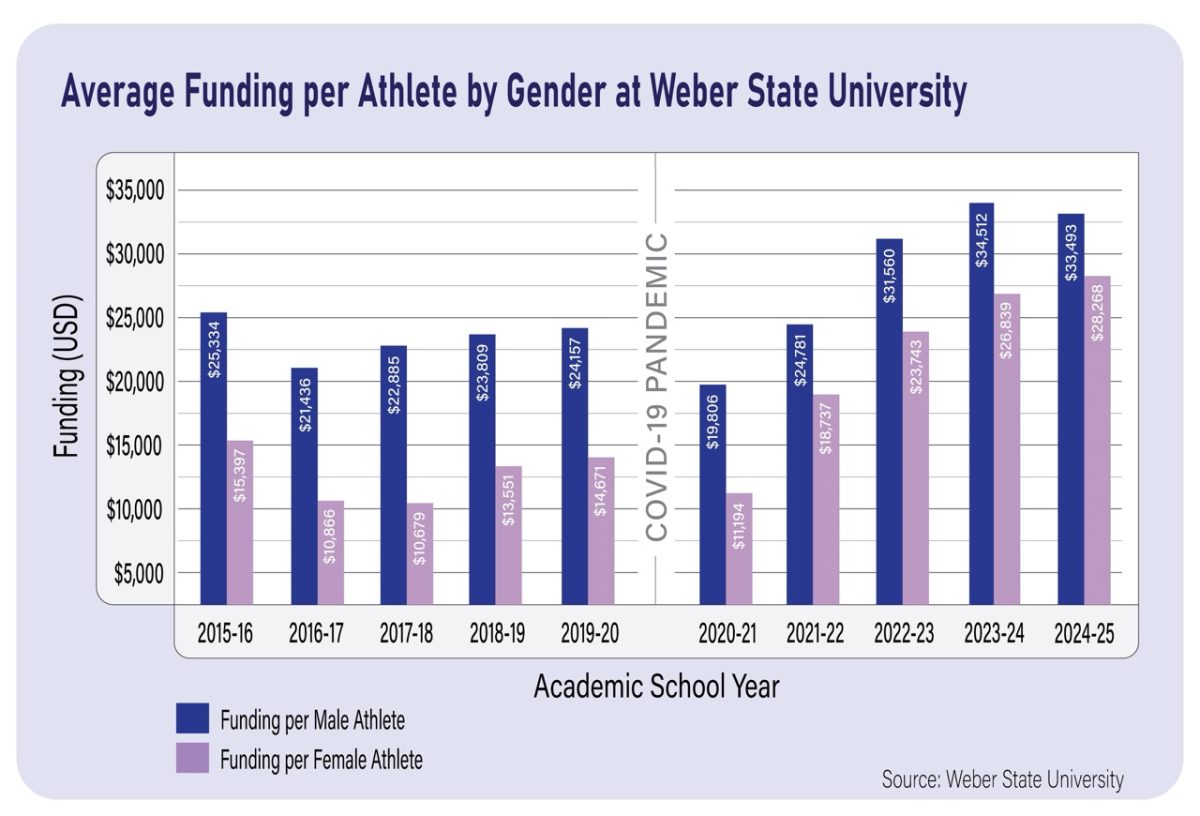Weber State University offers a new program that takes 3D printing to a new level. The Miller Advanced Research and Solution Center in Clearfield recently acquired Impossible Objects’ Composite-Based Additive Manufacturing 3D Printer — also known as CBAM-2.
The MARS Center, located at the Falcon Hill Aerospace Research Park in Clearfield, aims to bring in complex projects centered around new material research. The center was acquired by WSU in August 2022, and it offers a unique program for students.
Cage Vigil, a senior in the mechanical engineering program at WSU, works at the MARS Center as a student research assistant. According to Vigil, the CBAM 3D printer is one of two west of the Mississippi.
“The materials we’re working with, no one else really has,” Vigil said.
Devin Young, who has a doctorate in mechanical engineering, is a grant-writing research specialist at the MARS center. Under the direction of WSU’s mechanical engineering department, Young joined the staff two years ago to help establish the research center by investigating additive manufacturing, advanced composite materials, and high-temperature composites while bringing in research funding and performing research.
“A large focus here is that we want to work with Hill Air Force Base,” Young said. “We want to work with Northrop Grumman and the various aerospace industries here to be able to help them with their material development.”
The program’s main component is the CBAM 3D printer by Impossible Objects. According to Impossible Objects’ website, what makes the CBAM 3D printer different from your conventional 3D printer is the speed of using inkjet printing methods to produce high-performance composite parts.
Using sheets of carbon fiber that are 1 inch wide with printed shapes of the object, the printer stacks a series of the sheets, which are placed in a heated press and then compressed to the proper height and size of the object.
WSU acquired the printer when they took over the MARS center in 2022. However, the CBAM printer that was in the facility at the time was an older model. According to Young, they could trade it to Impossible Objects and receive the newer model currently in the facility.
“By taking over this area, taking over this building, specifically the MARS building, it was a way for Weber State to help better establish that relationship with the aerospace companies and with Hill due to proximity right by the West Gate of Hill Air Force Base, and develop that relationship, as well as introduce students to be able to do research and do some workforce development for aerospace, materials and manufacturing,” Young said.
The CBAM printer is not the only unique technology the facility offers.
Young hopes the CBAM printer will open new doors for WSU students to work on projects other universities in the state are working on. Professors from Brigham Young University and the University of Utah are interested in using the printer, starting a collaboration between universities.














